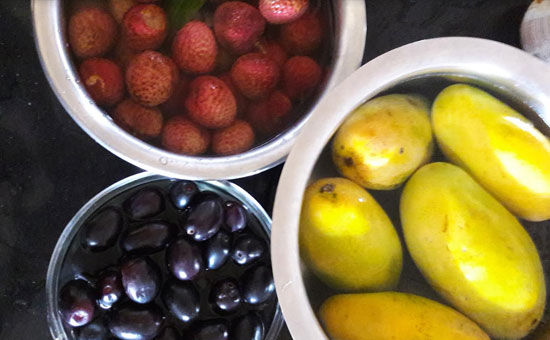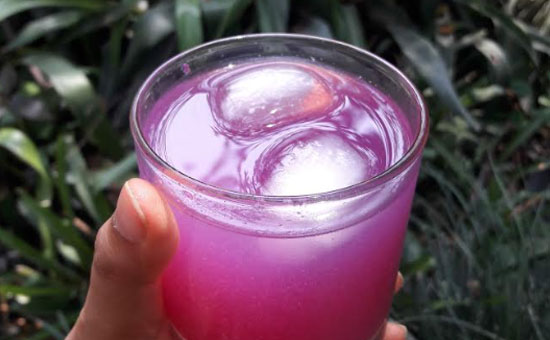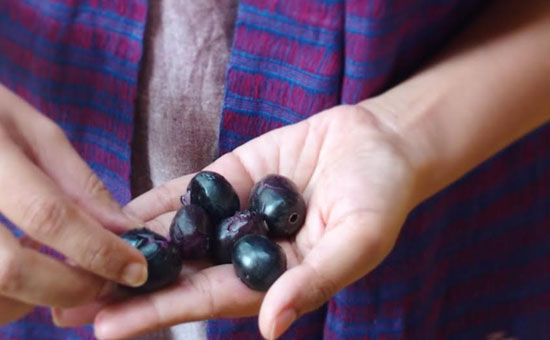- Article gives
seasonal importance of eating jamun, cultural significance and health benefits.
‘Eat Local, Eat Seasonal’ may have become the latest ‘woke’ statement for the Western world but for the Indian subcontinent, it has been the way of life, since time immemorial.
The wisdom of Ayurveda taught us to live in harmony with the seasons. Even the Panchaang gives a detailed explanation of what one should and shouldn’t consume, season-wise.
A popular folk saying
describes what one must avoid eating/doing in which month of the Indic
calendar:
चैते गुड़, वैशाखे तेल, जेठ के पंथ, अषाढ़े बेल।
सावन साग, भादो दही, कुवांर करेला, कार्तिक मही ।।
अगहन जीरा, पूसै धना, माघै मिश्री, फागुन चना।
जो कोई इतने परिहरै, ता घर बैद पैर नहिं धरै।।
Transliteration:
Chaite
gud, Vaishakhe Tel, Jeth ke Panth, Ashaadhe Bel
Saavan
saag, Bhaadon dahi, Kunvaar karela, Kaartik mahi
Aghan
jeera, Poose dhana, Maghe mishri, Phaagun chana
Jo
koi itne parihare, taa ghar baidya pair nahin dhare
Rough
Translation: The one who avoids jaggery
in Chaitra, oily food in Vaishaakh, roaming in the sun in Jyestha, Stone-apple
in Ashaadh, leafy vegetables in Shravan, curd in Bhadrapad, bitter gourd in
Ashvin, brinjal in Kartik, cumin in Margashirsh/Agrahayan, coriander in Pausha,
mishri in Maagh and gram in Phalguna does not fall ill.
(There
are many more sayings like this which also explain what one must eat. We will
talk about them, logically, some other time.)
Modern consumerism, aided by scientific advancements in the field of agriculture, has made many fruits and vegetables perennial or ‘Baarahmaasi’.
Fresh produce is exported,
imported and consumed by almost every country in the world. Due to these advancements, one can have
avocadoes grown in Mexico while sitting in India. The traditional avocado
season used to be summer but now they are available all-round the year.
This might seem
like huge progress for the human civilization but it also has repercussions that
negatively impact the health of the planet as well as its inhabitants. The
carbon footprint left by the transportation of such produce is enormous and the
agricultural practices used to support this lifestyle are not just unsustainable
but toxic.
In the wake of slow and sustainable movements, we have started realizing the implications of eating such produce as it is chemical-ridden and hardly qualifies to be called ‘fresh’. Therefore, local and seasonal has started gaining importance once again.
The summer season
or Greeshm Ritu in India, especially
the Northern half of the country, begins with arrival of fruits like - watermelons,
muskmelons and cucumbers. They are followed by lychees and then arrive the mangoes
(in the Western and Southern parts, mangoes arrive earlier).
Some of these fruits are watery and cooling but mangoes are heaty as they are ripened by high-temperatures. They are also quite high on sugar. It seems that nature wants us to consume natural sugar during summer, to fight the heat, but how does it balance this consumption? By giving us ‘Jamun’ at the onset of Monsoon and end of summer!
The old and wise in North India say that jamun is the ‘antidote’ of mango, one must eat as many jamuns as one eats mangoes.
Jamun balances the sugar and the heat of mangoes. It is believed that consuming ample jamun in the
season can help prevent Diabetes and keep sugar
levels balanced for the entire year.

Jamun (scientific name : Syzygium cumini) is also called Jambu Phalinda (Sanskrit), Naval
Pazlam (Tamil) and Nerale hannu (Kannada), Jambul, Jaman, Jam, Java plum, Black
plum, Faux pistachier, Indian blueberry etc. Jambu is native to the Indian
subcontinent.
The Puranas mention the division of the seven
continents in which the Indian subcontinent is referred to as ‘Jambudweep’ or the island of Jambu/Jamun trees. Hindu and Buddhist texts place Jamun trees at the
centre of the Universe. Ibn Battuta, the famous traveller also mentioned these trees
in his travelogue.
Jamun has immense value in the Ayurveda and Unani
systems of medicine. It is also used for making sherbets, wines
and vinegar.

Apart from balancing blood sugar levels the jamun
is also:
1. A great source of iron and vitamin C.
2. Known to treat ailments of the heart and
liver.
3. Used to treat stomach disorders.
4. A blood purifier and immunity booster.
Other parts of the tree, apart from the fruit, also
have several health benefits:
1. Dried and powdered leaves of jamun have anti-bacterial
properties. They are used as a tooth powder for strengthening teeth and gums.
2. The fruit and leaves possess strong astringent properties, making it
highly effective against throat problems and in eliminating bad breath
3. Application of a pack made from its seeds is a good
cure for skin problems, especially those of the oily skin.
The cultural significance of jamun is reflected in the fact that the deep-purple colour is synonymous with it, in some Indian languages. It is called ‘Jamuni’ in Hindi and Urdu. In Awadhi, jamun is called Pharend or Phalind (from Sanskrit) and its typical astringent taste is known as बखटाहट (Bakhtaahat),
a specific and unique word.

In folk culture, it is said - if the jamun stains your tongue it
means that you keep secrets or tell lies.
Interestingly, eating jamun always leaves a purple
stain on the tongue. This implies that all of us have failings, so we must not
judge others. Jamun, along with health benefits, gives us life lessons too.
Therefore, before we run after exotic food we must learn
to value our local superfoods.
Author is from Lucknow. She is a Jewellery
Designer, runs www.desidrapes.wordpress.com
and lots more.
To read all
articles by author
All pictures courtesy author.